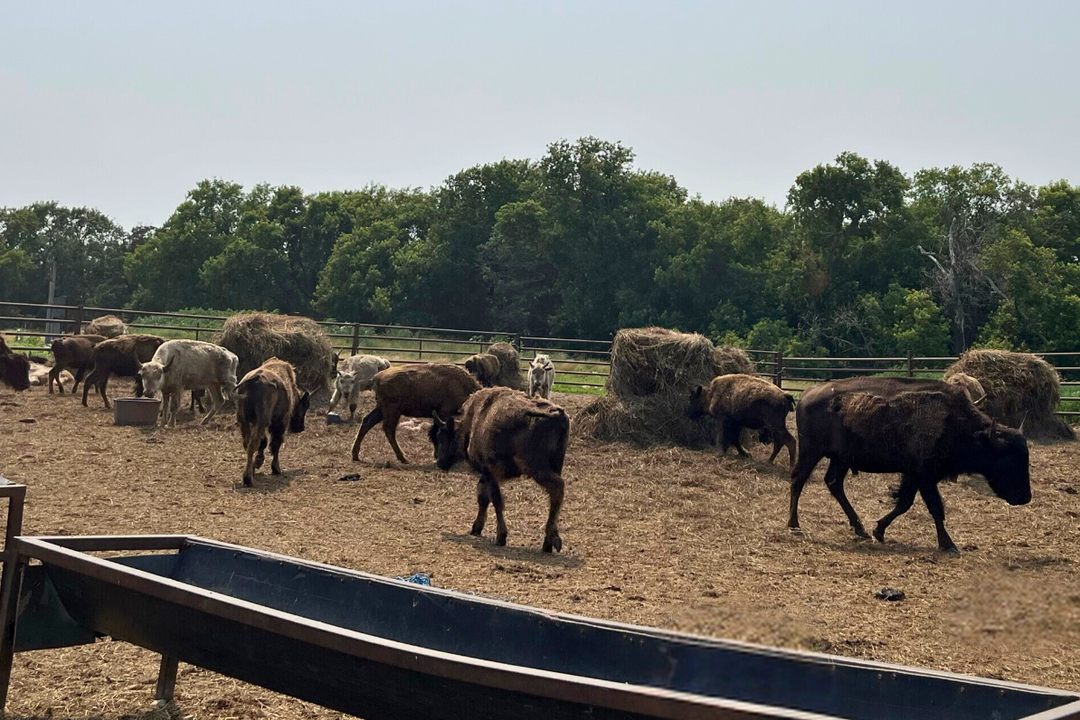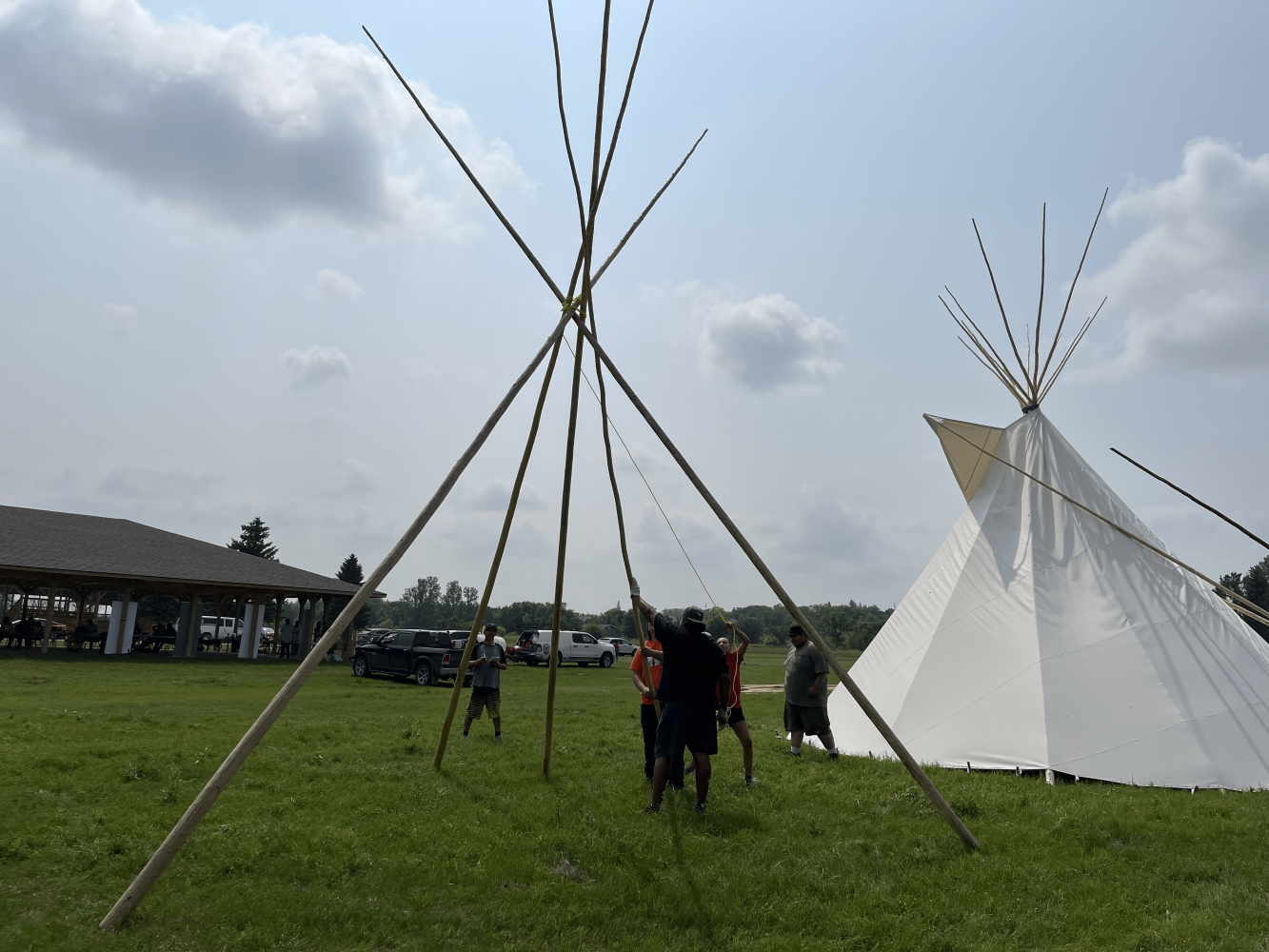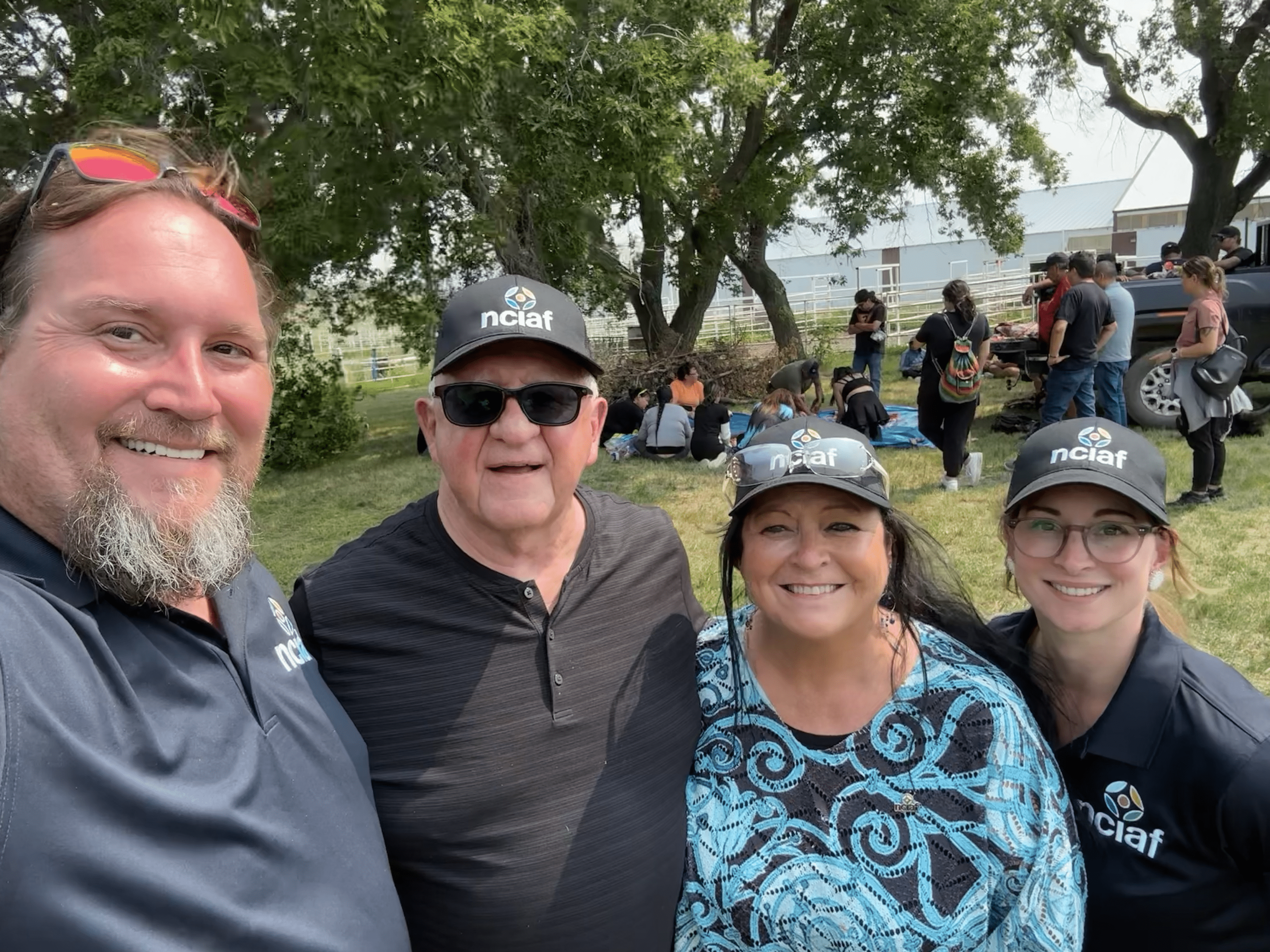Aug 1, 2024 I was deeply honoured to participate in the Sioux Valley Dakota Nation (SVDN) Food, Agriculture, Climate Change, & Traditional Synergies (FACTS) Camp. I am incredibly grateful for the opportunity to be part of such a meaningful event, where every moment was a testament to the power of community, tradition, and sharing knowledge. My heart overflows with appreciation for the warmth and wisdom shared by everyone involved. FACTS camp was organized by SVDN Lands Manager, Adam Subject. Adam is a proud Anishinaabe Saugeen Ojibway First Nation Band Member who relocated to SVDN, where his wife is from. “I think everyone can agree we’re starting to see the effects of climate change…that has a huge impact on food. [Our goal is] helping to relieve some of the high [food] prices and stress that’s on these folks trying to raise their families. When you’re part of something like that, it makes you feel proud…helping people come together in a good way to get back to those traditional ways of farming and agriculture. That’s kind of what camp was all about.” – Adam Subject, SVDN Lands Manager The three-day camp commenced with a tour of the Brandon Residential School; a property now owned by SVDN. The second day included a lunch, cooked over open-flame, which community members and volunteers helped to make. A woman from the community made buffalo stuffies for the children to take home, exemplifying the generosity and sense of community present. The final day featured a traditional buffalo harvest, where youth got to learn how to harvest the meat once slaughtered and take home what they cut to their families. White Buffalo Calf Woman Among their herd of 147 buffalo, 16 are white buffalo. In the Indigenous culture, the White Buffalo holds significant importance. For those unfamiliar with the story of the White Buffalo Calf Woman, Orville shared his Dakota version with us. The Creator brought the Seven Sacred Rights to Indigenous Peoples through the White Buffalo Calf Woman over 2,000 years ago so that the Peoples could flourish and have a better life. Just like Mother Earth, the Creator chose a female entity to bring these Seven Sacred Rights. Orville explained “The buffalo is so important to our lifestyle as Plains Indians. The buffalo we need for fertilization of our environment. There used to be millions and millions on this Plains land, but now, this is all we have…So if things don’t change, I think the Creator is going to step in again”. The SVDN Peoples take this sign of white buffalo in their herd seriously and believe that they are a sign from the Creator that things need to change in society. Buffalo Harvest It was a privilege to witness the buffalo huddled together right beside the fence, so strong and majestic, dust in the air from their hooves in the dirt. When it was time for the harvest, a truck and tractor ventured into the pasture, where the chosen buffalo presented itself, giving its life for teachings the youth will never forget. After the bull’s sacrifice, the rest of the herd circled in defense and grief, demonstrating their intelligence and social bonds. It was truly remarkable to witness. It took several attempts to penetrate the buffalo circle before the crew was permitted to take the buffalo. Once they had the buffalo attached to the tractor, the herd followed behind him until he was out of the pasture. Buffalo are incredibly intelligent beings, and this is a great example of such. The youth were right in front watching and learning how to harvest meat. The same knowledge and skills they are learning could be used to harvest wild game or beef. Not only this, but being able to see the organs - heart, liver, stomachs (which they knew cattle had four of!), intestines, etc. - is a great way to understand their own anatomy. Learning about the ventricles and valves in a large heart up close, or the soft feel of the buffalo Hyde. The engagement from the youth in the Sioux Valley community was amazing. The looks on their faces, their captivity through each phase of harvest, was truly inspiring. Talking with some of the youth after, they were astounded by the behaviour of the buffalo after life was given. They couldn't believe how they circled and grieved their loss. There is no doubt in my mind that the youth today have respect and admiration for the buffalo species. Once skinned and carved, the buffalo was taken to the ranch, where youth had the opportunity to harvest their own meat from the carved buffalo. I saw a teenage girl get right in there, timid at first but willing to try. By the end, she was sitting on her bum, legs out in front, carving the buffalo like she had been doing it all her life. It was incredible to witness these kids learning. Not only did they get to learn how to cut it, but they got to take it home to their families and they can cook the fruits of their labour. The youth also got to practice or learn how to shoot bow and arrows in archery lessons. Grasslands Restoration Project On the third day, we went to see their Grasslands Restoration project. The goal is to reseed their buffalo pastures and surrounding lands to their natural Prairie grassland roots. Historically, Prairie grassland had a rich, biodiverse ecosystem. SVDN hopes to re-establish as much traditional grassland as possible, which will enrich the soil quality and health of their buffalo herd. SVDN seeded 98 acres into native grasslands in 2023. The impact of the restoration project was evident in the first growing season, with the healthy, lush diversity in the grasslands, not to mention the diversity amongst the insects and animals we observed within it. Community Garden We also toured their community garden. The community garden resides beside their greenhouse. High school students are hand selected to work in the community garden over the summer. All produce grown in the garden is distributed amongst community members. SVDN is in the midst of planning a geothermal greenhouse to extend their growing season. Residential School As part of the end of our trip, we paid our respects to the remains of the Indian Residential School in Brandon. The air was heavy, and emotions were high. There are tears in my eyes as I think back to the visit, feeling a strong responsibility to right the horrible wrongs of my ancestors for a better future for everyone. 
Empowering the Next Generation: Sioux Valley Dakota Nation FACTS Camp Revitalizes Tradition
"How Dakota Youth Are Keeping Sacred Knowledge Alive"

Kallie Wood, NCIAF President & CEO, Kate Fraser, Reconciliation and Capacity Specialist
